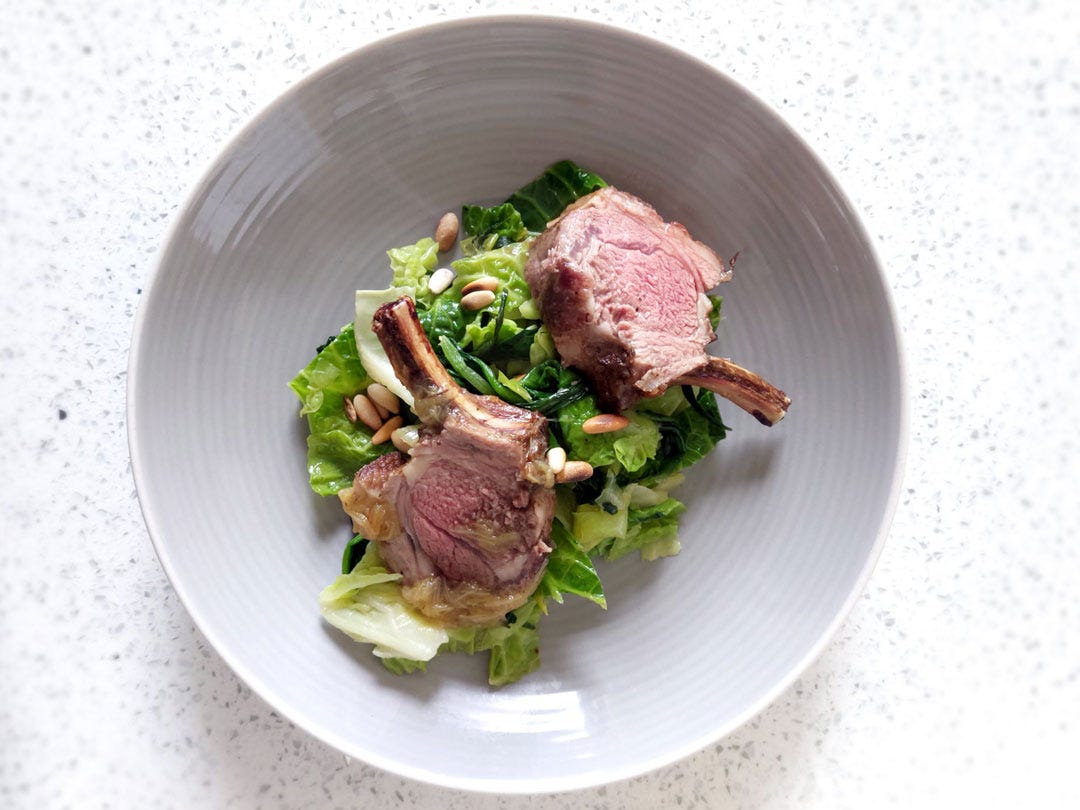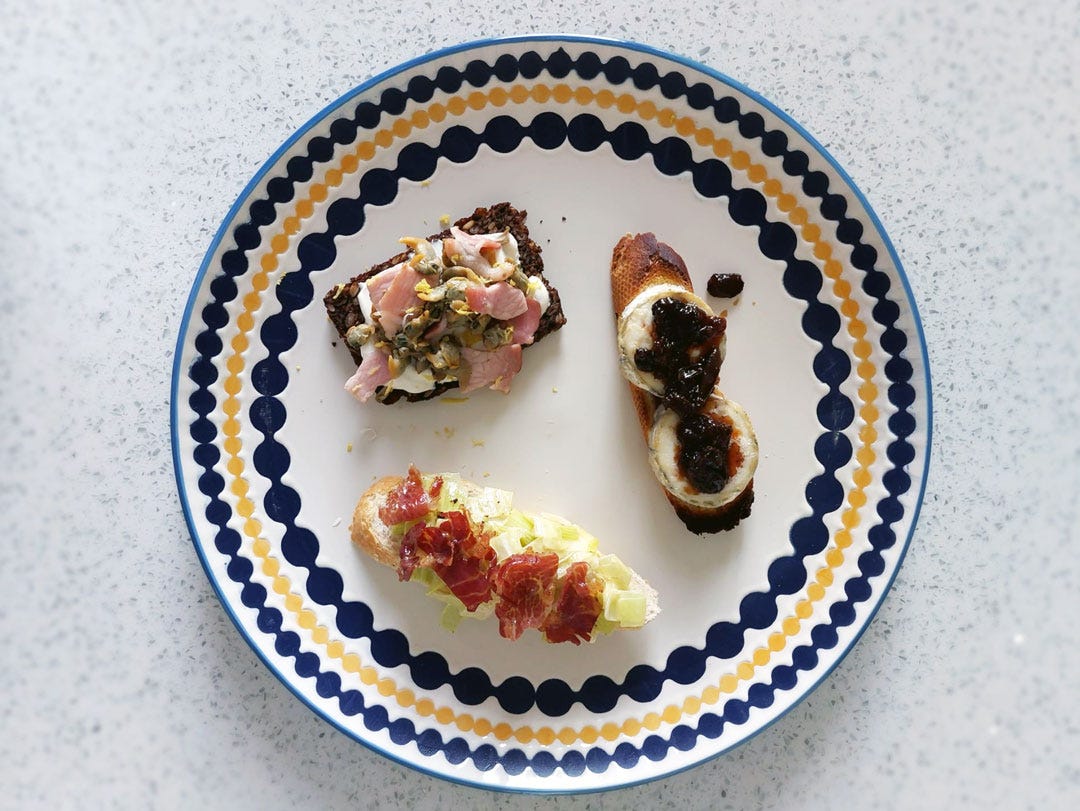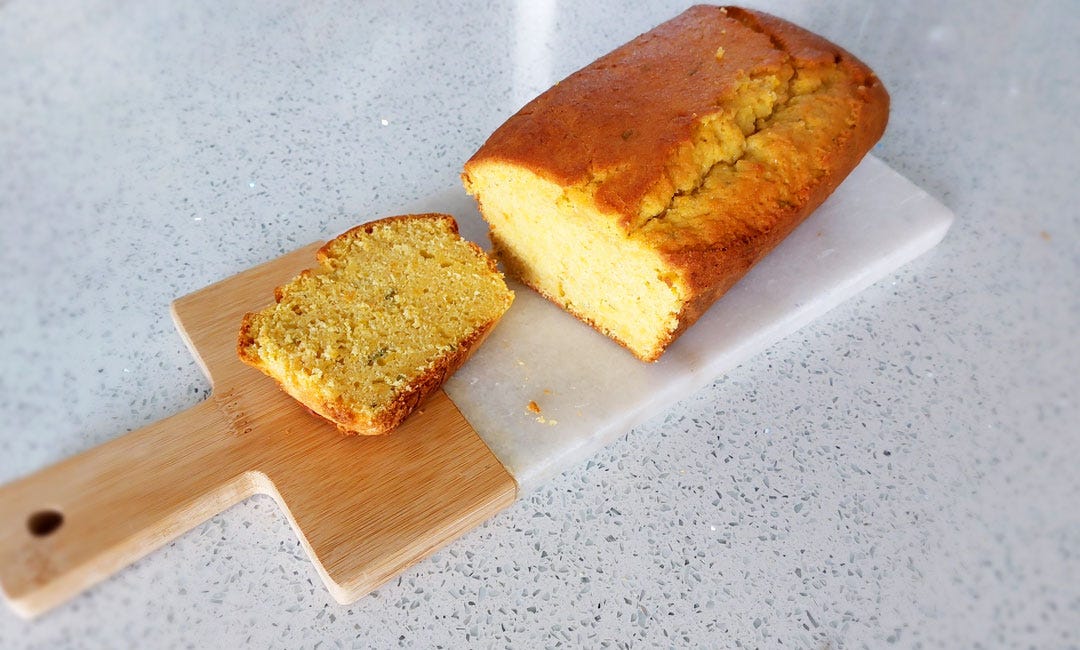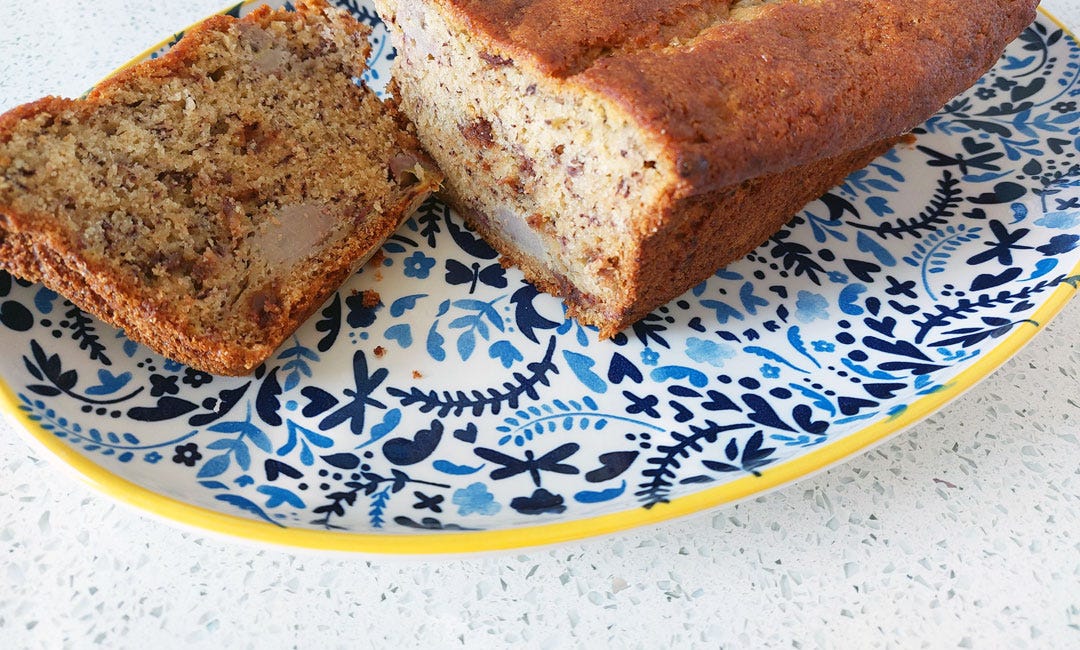Home and away
A trio of Welsh pintxos
It's been a month of travel for me. April and May are always busy months for travel writers, as hotels and travel companies want to get you in to see their new offerings before the high season starts. I'm not complaining. I love exploring a new place or rediscovering an old favourite through its food scene. We can learn so much from other cultures and their eating habits. Some of which I bring back into my own kitchen, be that ingredients, methods of cooking, or ways of enjoying food.
In April, I ventured to West Denmark to the region called Kystlandet or ‘coastal land’. This stunning 266 kilometres of coastline has fjords, an archipelago and wonderful countryside. During my trip, I was lucky enough to visit three farms. Their owners have all decided to forgo the classic farming of pigs – Danes really do love bacon it turns out – and are trying something different. First up, I went to see Anders and Sissel at The Little Organic Farm Shop (Det Lille Økori). Neither had been farmers before they took on these plots three years ago. They’ve transformed them quite miraculously in that time into a farm for microgreens and mushrooms (and a few other vegetables). They take their trays of produce directly to the kitchens of some of the area’s best restaurants, such as the dining room of Hotel Vejlefjord (one of Denmark’s best spa hotels), when done, the trays get returned and the whole cycle begins again. On my visit, Anders kindly plucked off sprouting greens for me to taste, from rocket to mustard seed, before we went into their mushroom cave. Okay, not so much a cave but a shipping container, but it’s still cool to see bouquets of oyster mushrooms lining the shelves. Naturally, I couldn’t resist picking a bunch that was ready to head off to a restaurant.
Next up we went to a farm that has taken to growing apples and producing some fantastic cider. Brandbygegaard Winery, the home of Søren and Lone, a couple who seem to be able to do just about anything, from producing their own cookbooks, to hosting a sell-out, pop-up restaurant, to refurbishing a barn to use as a tasting and function room. Interestingly, they tried a few grapes – rondo and such that we actually grow in Wales – but they didn’t like the results so have focussed more on the cider. They were all delightful and one even gets the full Champagne treatment, so of course I had to buy a bottle to bring home!
Lastly, I met Tine and Magnus from Reballegaad. This couple might be the coolest people I’ve ever met, and they have been working on an old dowager house that was once part of the family’s pig farm. They’ve made it into the most stylish scandi-chic B&B, and a house for themselves. They haven’t given up on farming though, they’ve decided to plant nettles. I’m a big fan of foragable food although my nettle knowledge is a little lacking. Thankfully, my hosts are no such strangers and serve me nettle soup, crab bisque using crabs from the fjord, a range of salads, and finally a shockingly green, nettle cake with meringue. I’m sold on the stingy plant and as soon as I got back, I had to try using nettles, which I cooked up with some wild garlic and spring greens silken with butter, with a rack of Welsh lamb.
I was sad not to be able to visit a seaweed farm off the little island of Endelave, but I think I might head back there at some point to see how it compares to our Welsh laverbread. Of course, we have the Vikings to thank for most of the names of our Welsh islands, including Caldey, Freystrop, Skokholm and Anglesey.
Not even a week later, and I was off to San Sebastián in the Basque Country. It’s such an exciting for city for food lovers. I eschewed the Michelin brigade (there are more Michelin star restaurants here per capita than anywhere else on earth) as I’m generally not a fan – often finding the food too fussy and needing a stop at McDonald’s on the way home to fill up. Anyway, the point of San Sebastián for me is pintxo culture. Pintxos (or pinchos) are little snacks served in bars – often from a glass cabinet on the counter – that pair with a beer, wine, cider or vermouth. Most are served on little slices of baguette-style bread although not exclusively. While you’ll find pinchos all over Spain, San Sebastián makes them an art form. And the bars throng with visitors wanting to try the best each bar has to offer. It suits my way of eating, as I always want to try a little bit of everything. I did have a sit-down dinner one night as I was kindly invited to the relatively new Nobu restaurant housed in the Nobu Hotel on La Concha beach. Nobu is famous for its sushi and black cod among other dishes, but I was delighted to see the local elements incorporated in the menu, and while the classic showstoppers were delicious, my favourite dish was a Spanish classic: pimientos de padrón (Padrón peppers) drizzled generously with miso sauce. I could have inhaled another two platefuls. I paired it all with a red txakoli wine (I didn’t know that this ever-so-slightly fizzy wine came in red as I’ve only ever had it white but you learn something new every day).
My final trip was one that I’ve been making for most of my life. A visit to Trecco Bay in Porthcawl. I think I’ve said before, that if someone asks what my favourite holiday has ever been, I always say that it was the times we spent in my Nannie Gwen’s static caravan in Trecco Bay. This week, my great aunts and uncles along with some cousins and my mum, booked into a caravan. I only went down for the evening, but what a flood of wonderful memories. We ventured to the Ancient Briton pub for a swift half before grabbing rissole and chips from Finnegans and heading back to enjoy it all together in the caravan. And of course, there was singing all night and free-flowing wine and beer. I can safely say, it’s still my favourite.
The Recipe
Trio of Welsh pintxos
Inspired by my trip to San Sebastián, and because the weather has suddenly got warmer, I’ve created these three easy pinchos with a Welsh flavour. I wanted to use laverbread on top of rye bread with cream cheese, but I realised I didn’t have any in the cupboard, so replaced it with cockles and a little bacon. You can really use whatever you have in the fridge or cupboard, and feel free to replace any of the parts with your favourites. Bread-wise, you can use anything you want. I used some French stick and some rye bread.
Creamed leeks with crispy Carmarthen ham
1 leek, finely chopped
Butter
3 tbsp double cream
1 tsp Dijon mustard
Few slices of Carmarthen ham (or jamón serrano or Parma ham), cut into small pieces
In a pan, gently soften the leeks in the butter for about 15 minutes.
Add the cream and mustard and a generous amount of black pepper.
In a separate pan (or under the grill), gently crisp up the ham.
Load your fresh baguette slices with the creamy leeks and top with pieces of crisp ham.
Cockles and bacon
Few rashers of bacon, cut into small pieces (you could also use lardons)
Small jar/ tin cockles, rinsed and patted dry
Cream cheese
Lemon zest
In a pan, crisp up the bacon. When ready, add the cockles and give the whole pan a good mix to coat the cockles in the bacon fat.
Spread your rye bread slices with cream cheese and top with the cockle and bacon mix.
Grate a little fresh lemon zest over the top.
Goat’s cheese and chutney
Welsh goat’s cheese, cut into slices
Fruity chutney (I used Dylan’s Fruit Chutney)
Place the slices of goat’s cheese onto the baguette slice and pop under a hot grill until the cheese is melted and bubbling.
Top with the chutney and enjoy.
The Playlist
To me, cooking and music go hand in hand, whether that’s singing at the top of your voice using a wooden spoon as a microphone while waiting for pasta to boil, or dancing around with the oven gloves on as the oven timer counts down. Here are this week’s ideas for your Welsh Kitchen playlist.
As it was Eurovision last night, we’re listening to some Welsh artists who have performed at the contest. First up, Jessica Garlick with the song Come Back, which finished joint third place in 2003. Second, we have Mary Hopkin with Knock Knock Who's There. She came seventh back in 1970. Finally, we have Emma Louise Booth singing Give a Little Love Back to the World back in 1990. It came in at sixth place.
Come Back by Jessica Garlick
Knock Knock Who's There by Mary Hopkin
Give a Little Love Back to the World back by Emma Louise Booth
Ross recommends
An night with Nerys Howell
Welsh food writer Nerys is launching her new book Cywain | Harvest at the London Welsh Centre on Wednesday 22 May at 7pm. There’ll be a cooking demonstration, a cheeky wine and more. Tickets are £8 – or £6 if your use the code NERYS6 – Sadly, I’m not able to make it, but it sounds like a great evening of Welsh food and fun.
From the archive
Time for a twmpath
May has always been a time for celebration in Wales. It marks the moment that farmers would move their flocks up onto the mountains from the valley floor, and move to the hafod – the summer dwelling (haf means summer in Welsh) – from the hendre – the winter dwelling (
Wales in the world: Canary Islands
The view from my grandparents’ front room window looked over the Severn Estuary. On a good day, you could see all the way over to Clevedon and Weston-super-Mare in Somerset. My grandad, Poppa, would often stand there looking out and tell us which boats were coming into the docks at Newport. He’d tell us that the tugs were going out ready to guide a ship…






